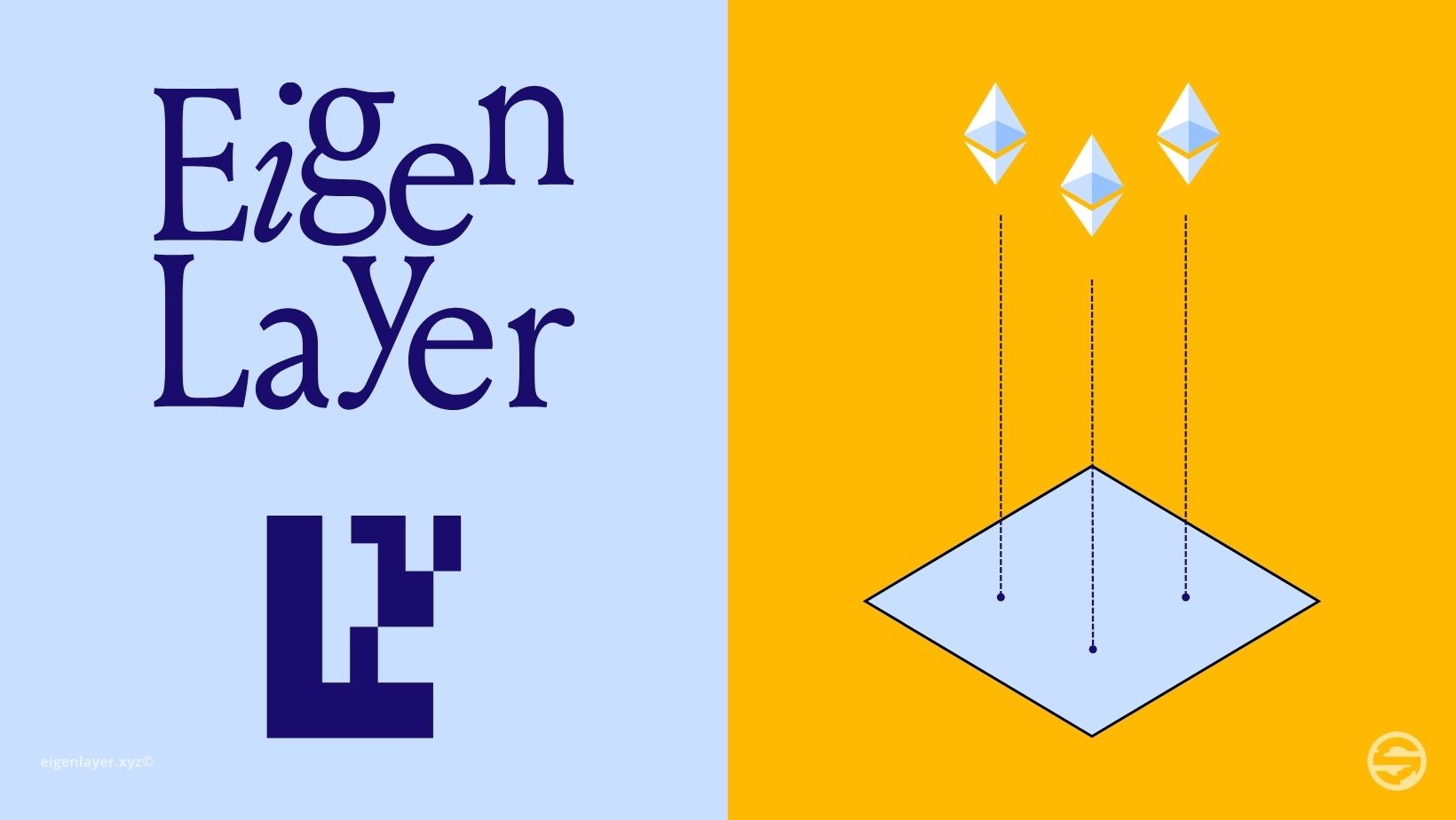
Table of contents
What is EigenLayer?
EigenLayer is a protocol developed on Ethereum that introduces restaking, a new method in cryptographic security. This concept enables ETH to be reused on the consensus layer. Users who stake ETH directly or with a Liquid Staking Token (LST) can choose to participate in EigenLayer's smart contracts to reinvest their ETH or LST and extend cryptographic security to other applications on the network to earn additional rewards.
En termes très simplifiés, EigenLayer permet aux utilisateurs de réinvestir leur Ethereum ou un LST pour renforcer la sécurité du réseau et gagner des récompenses supplémentaires.
How restaking works
As previously mentioned, EigenLayer is working within the Ethereum ecosystem to enhance its staking system through a process called restaking. This innovative approach improves both the functionality and security of Ethereum's staking infrastructure. Here's how EigenLayer works in practice:
First, users begin by staking their assets, which typically involves depositing ETH or LST on the EigenLayer platform. Once the assets have been staked, users have the opportunity to participate in EigenLayer by committing to specific smart contracts designed by the protocol.
Then, through restaking, participants help secure various decentralized applications (dApps) and services within the Ethereum ecosystem. This process diversifies investments and has the potential to increase rewards.
In addition, EigenLayer offers flexible participation, enabling users to join several security pools simultaneously. This not only reduces the capital required to participate, but also enhances the overall confidence and security of the network.
Furthermore, an important aspect of EigenLayer is the ability for stakers to delegate their restacked assets to operators. These operators specialize in managing the restaking process and implementing various staking strategies tailored to different profiles.
Finally, to guarantee security, EigenLayer introduces a retention period for withdrawals, usually around seven days, adding an extra layer of security to the withdrawal process.
Benefits and risks of EigenLayer
EigenLayer offers significant advantages:
- - Enhanced security: EigenLayer provides access to Ethereum's security layer, expanding the number of validators and improving initial security.
- - Great flexibility: by using EigenLayer, protocols retain their sovereignty, while having the freedom to customize their architecture, consensus mechanism, etc.
- - Increased rewards: stakers can earn rewards from several protocols with the same capital, thanks to the possibility of staking on several protocols.
- However, according to a Coingecko article, there are potential risks:
- - Risk of slashing: users may be penalized on staked tokens if they act maliciously. This mechanism also encourages honest behavior.
- - Centralization risks: there is also a centralization risk, as ETH stakers may decide to redirect their withdrawal credentials to EigenLayer due to the promise of higher returns. This creates a systemic risk for the Ethereum network in the event of exploitation.
- - Yield risk: this risk arises when EigenLayer stakers seek the highest yield, prompting protocols to offer higher yields to attract stakers. This can lead to lower returns for protocol users.
Conclusion
- In conclusion, EigenLayer enhances Ethereum's staking infrastructure by offering a more secure and flexible method of asset allocation, benefiting network security. By introducing restaking, EigenLayer strengthens the security and stability of the Ethereum blockchain. Although it offers flexibility and higher rewards, it is important to consider the associated risks, such as penalties, centralization and lower returns for users.

- Sources:
- https://docs.eigenlayer.xyz/eigenlayer/overview, consulted on 19.02.24
- https://www.coingecko.com/learn/eigenlayer-restaking-ethereum, consulted on 19.02.24
- https://www.datawallet.com/crypto/eigenlayer-explained, consulted on 19.02.24
Disclaimer : This is not financial advice. The Satolix.io website aims to inform readers about Blockchain, cryptocurrencies, and Web3. Any type of investment involves risk. Please conduct your due diligence and research the articles and projects presented on the site. Be responsible and do not invest more than your financial goals or means allow. In this regard, read our page : Warning about virtual currencies.
Some articles on the site contain affiliate links, and using them to register from the site allows the site to develop through the collection of commissions. By doing so, you also make yourself eligible for a welcome bonus, such as a voucher or fee reduction.



 Blockchain, Ethereum, Crypto, DeFi
Blockchain, Ethereum, Crypto, DeFi 2024-02-18
2024-02-18
